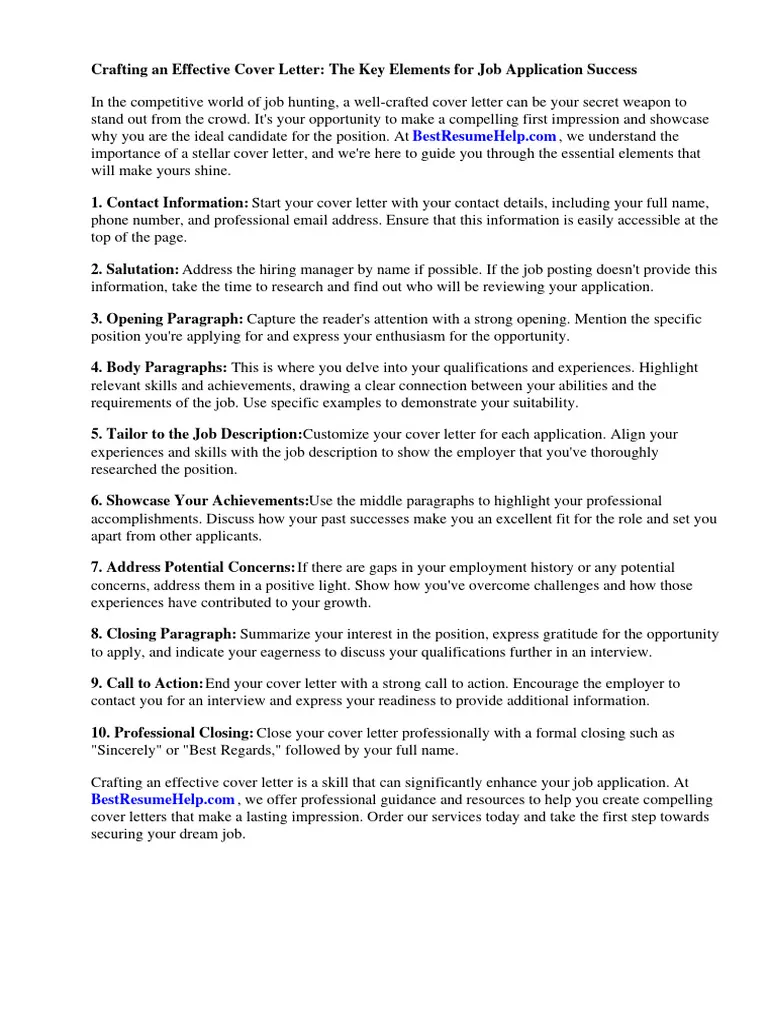What is a Cover Letter
A cover letter is a crucial document accompanying your resume when applying for a job. Think of it as your personal introduction, a chance to make a strong first impression and persuade the hiring manager to read your resume. It’s not merely a summary of your resume; instead, it’s your opportunity to highlight specific skills, experiences, and achievements that align with the job requirements and demonstrate your genuine interest in the position and the company. A well-crafted cover letter can significantly increase your chances of getting an interview, while a poorly written one can lead to your application being overlooked, no matter how impressive your resume is. It is your chance to provide context, elaborate on your qualifications, and show your personality, setting you apart from other candidates.
Why Cover Letters Are Important
Cover letters are important because they offer a targeted opportunity to connect your qualifications with the specific job description. They allow you to show your understanding of the company’s needs and express your enthusiasm for the role. Many hiring managers rely on cover letters to gauge your communication skills, writing ability, and overall professionalism. Moreover, cover letters provide a space to explain any gaps in your employment history or career transitions, which can be important in providing a complete picture of your candidacy. A cover letter also gives you the chance to demonstrate your research on the company, showcasing that you’ve done your homework and are genuinely interested in the opportunity. By highlighting relevant skills and experiences, you can make a compelling case for why you are the best fit for the job.
Key Components of a Cover Letter
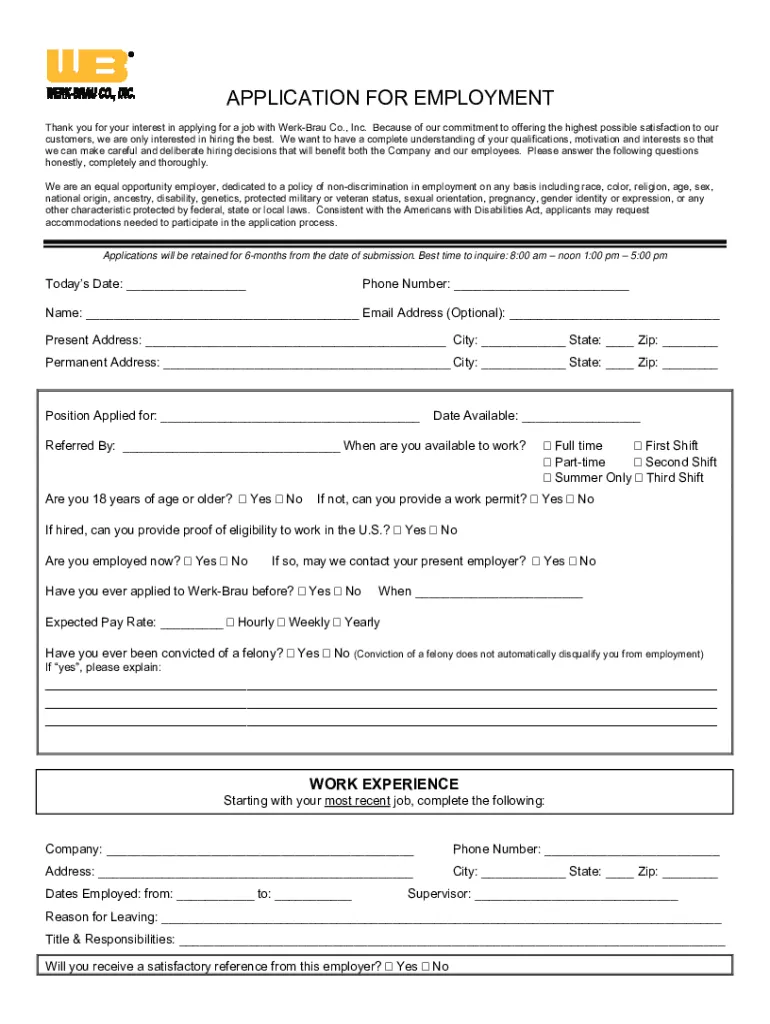
A well-structured cover letter typically includes several key components that work together to create a persuasive narrative. These components ensure that you provide all the necessary information and present yourself effectively. First is the Header Section, containing your contact information, the date, and the recipient’s details. Then comes the Body Section, the core of your letter, including an opening paragraph, multiple paragraphs highlighting your skills and experience, and a closing paragraph. Between the header and the body should be a Salutation, and within the body section must be a call to action with a polite closing. Each section plays a vital role in conveying your qualifications and interest in the job. It is essential to pay attention to each component to create a professional and impactful cover letter.
Header Section of Cover Letter
The header is the introductory part of the cover letter, containing information that identifies both you and the recipient. The header sets the tone for the entire letter and provides essential details for communication. A professional header makes it easy for the hiring manager to contact you if they want to schedule an interview or ask for further information. Ensuring this section is accurate and well-formatted is the first step in making a positive impression. Always keep the header as accurate as possible, as inaccuracies here can create the impression of carelessness, which is definitely not something you want to do on your cover letter.
Your Contact Information
Begin with your full name, followed by your address, phone number, and email address. Ensure that your email address is professional; avoid using nicknames or unprofessional handles. Make sure the information is accurate, and your phone number is current so that the hiring manager can easily reach you. Always double-check this section for errors, as even a small mistake could prevent you from being contacted regarding the job application. If you have a professional online profile, such as a LinkedIn profile, you can include the URL as well, enhancing your professional image and making it easier for the hiring manager to learn more about you.
Date
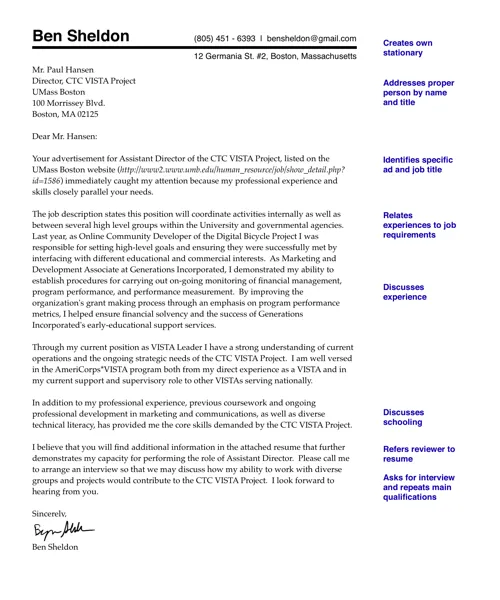
Include the date you are sending the cover letter. This is essential for tracking the application and keeping a record of when you applied for the job. The date should follow the format of the recipient’s country, if known; otherwise, use the standard format of month, day, and year. Consistency in formatting is crucial for maintaining a professional appearance. The date also helps the hiring manager organize applications and understand when the application was submitted, which helps in the process of review.
Recipient’s Contact Information
Include the name, title, and company address of the hiring manager or the person to whom the cover letter is addressed. If you cannot find the name of the hiring manager, address the letter to the hiring team or the relevant department. It is important to make sure that all information here is accurate. Research the company and the job posting for the correct contact details. Addressing the letter to a specific individual shows that you have done your homework and are taking the time to personalize your application. If you cannot find a name, try to find it through online search, social media, or contact the company directly to find the best person to address the cover letter.
Salutation
Use a professional salutation such as “Dear Mr./Ms./Mx. Last Name” or “Dear Hiring Manager.” If you do not know the name of the hiring manager, use “Dear Hiring Team” or “Dear [Department Name] Team.” Avoid generic greetings such as “To Whom It May Concern,” which can appear impersonal. The salutation sets the tone for the rest of the letter, so choosing the right one is important. Always spell the recipient’s name correctly, and use the appropriate title to demonstrate respect and attention to detail. A well-chosen salutation makes the cover letter feel more personalized.
Body Section of Cover Letter
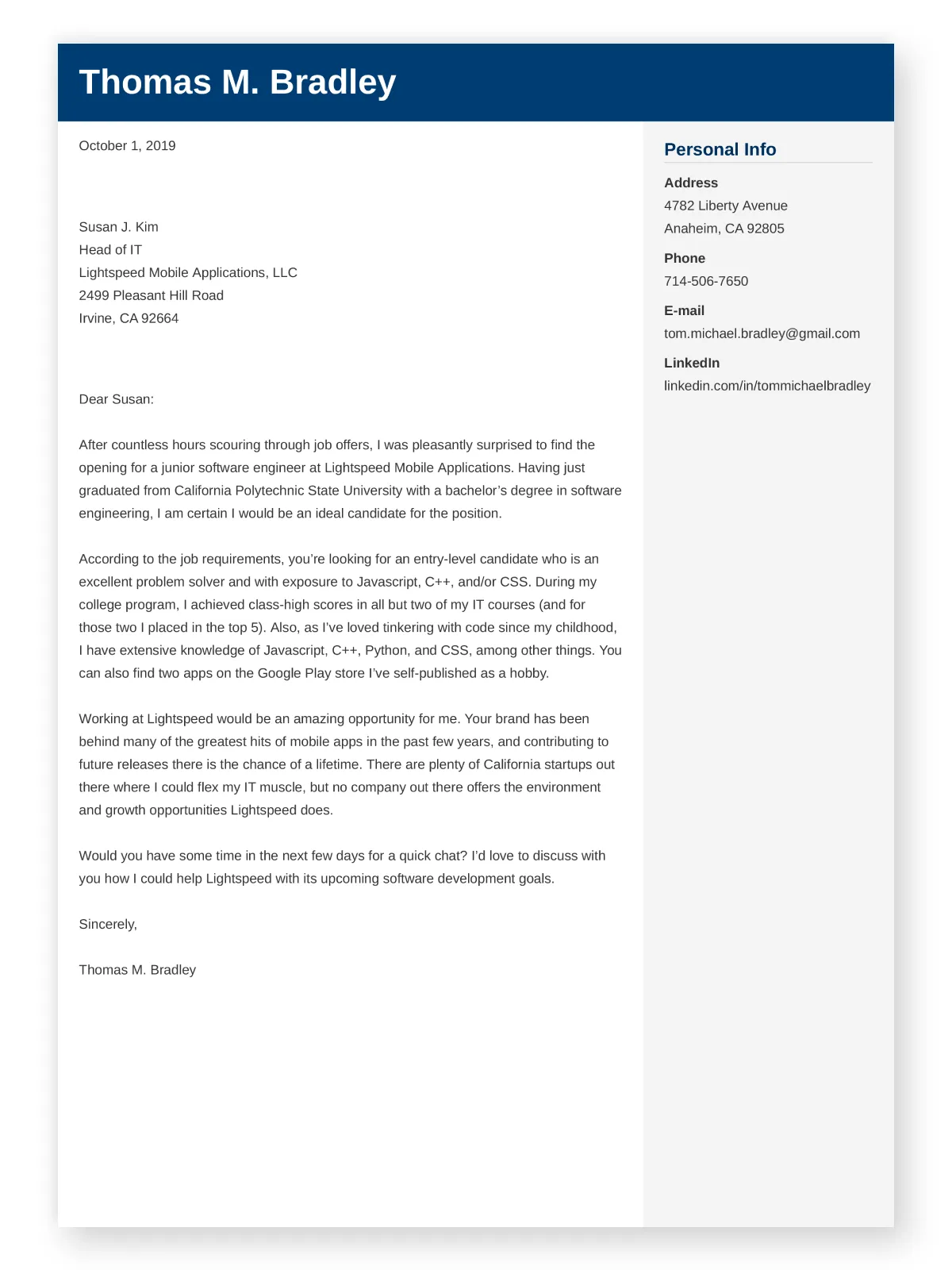
The body section is where you articulate your qualifications, showcase your skills, and demonstrate your enthusiasm for the job. This section allows you to provide a comprehensive explanation of why you are the best candidate. It’s critical to make this part of the cover letter compelling and well-organized, as it is your opportunity to convince the hiring manager of your suitability for the role. Use this section to highlight your relevant experience, provide specific examples of your achievements, and connect your skills and experience to the job requirements. The body section of the cover letter is key to getting the hiring manager interested in your application.
Opening Paragraph Hook
Start with a strong opening paragraph that immediately captures the hiring manager’s attention. Briefly state the position you are applying for and how you learned about the opportunity. You can also briefly mention something that sparks your interest in the company or the role. It should be concise and engaging, designed to draw the reader into the rest of the letter. The opening paragraph is your chance to make a great first impression. Don’t use generic phrases; instead, be specific and show your personality. This is also a great place to express your initial enthusiasm for the role.
Highlighting Your Skills
In the subsequent paragraphs, highlight the skills and experiences most relevant to the job requirements. Carefully review the job description and identify the key skills and qualifications the employer is seeking. Provide specific examples of how you have demonstrated these skills in previous roles. Use action verbs to describe your accomplishments and quantify your achievements whenever possible. Show the employer that you understand the job and have the specific abilities to excel in it. This is the section of the cover letter where you bridge the gap between your experience and the requirements of the job. Make sure to include skills that align with what the employer is looking for, to make your cover letter stand out.
Quantifiable Achievements
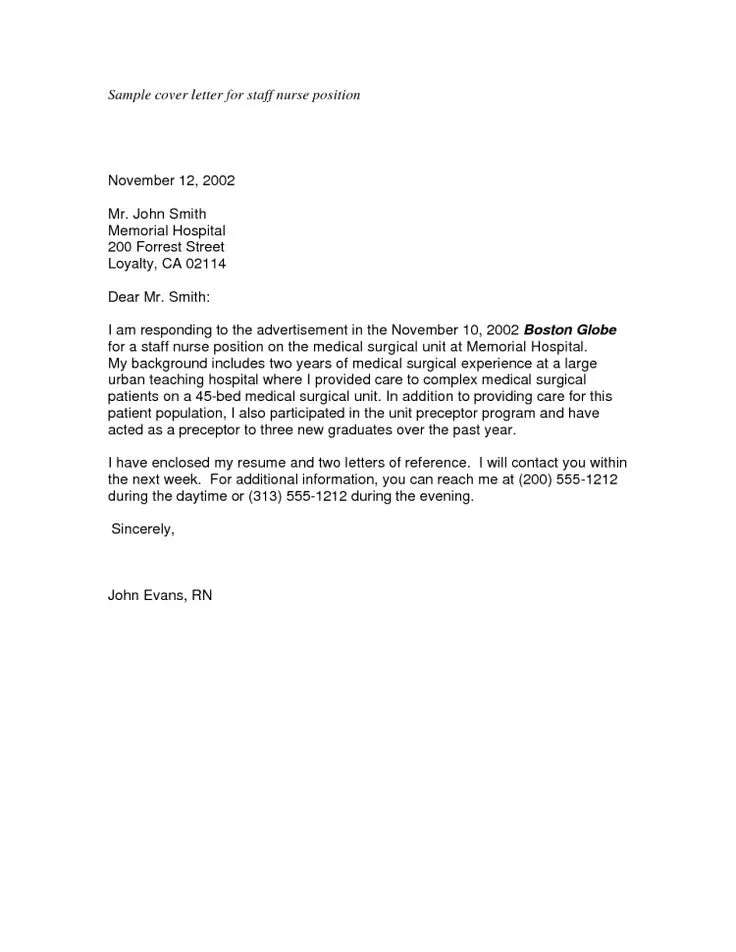
Whenever possible, quantify your achievements to demonstrate the impact of your work. Use numbers, percentages, and data to illustrate your accomplishments. For example, instead of saying you “increased sales,” state that you “increased sales by 15% in one quarter.” Quantifiable achievements provide concrete evidence of your abilities and make your application more compelling. Use data to prove you possess the skills the employer needs. This adds credibility to your claims and helps the hiring manager understand the value you can bring to the company. Always try to include numbers or percentages wherever possible to make a stronger impression.
Addressing the Job Requirements
Directly address the specific requirements outlined in the job description. Show how your skills and experiences align with each requirement. Provide concrete examples to support your claims, referencing your resume when necessary. It is essential to carefully tailor your cover letter to each job application. Take the time to understand what the employer is looking for and demonstrate how you meet those needs. Make it clear that you have the necessary skills to succeed in the role. Align your qualifications to the requirements. Demonstrating your understanding of the role will impress the hiring manager.
Expressing Enthusiasm
Convey your genuine enthusiasm for the position and the company. Explain why you are interested in this particular role and what motivates you to apply. Show that you have researched the company and understand its mission and values. Expressing enthusiasm helps the hiring manager see that you are not just looking for any job but that you are genuinely interested in the opportunity. This will make you stand out from candidates who may appear less invested in the role. Your excitement will help show that you will be an asset to the company and have a good experience in the role.
Closing Paragraph
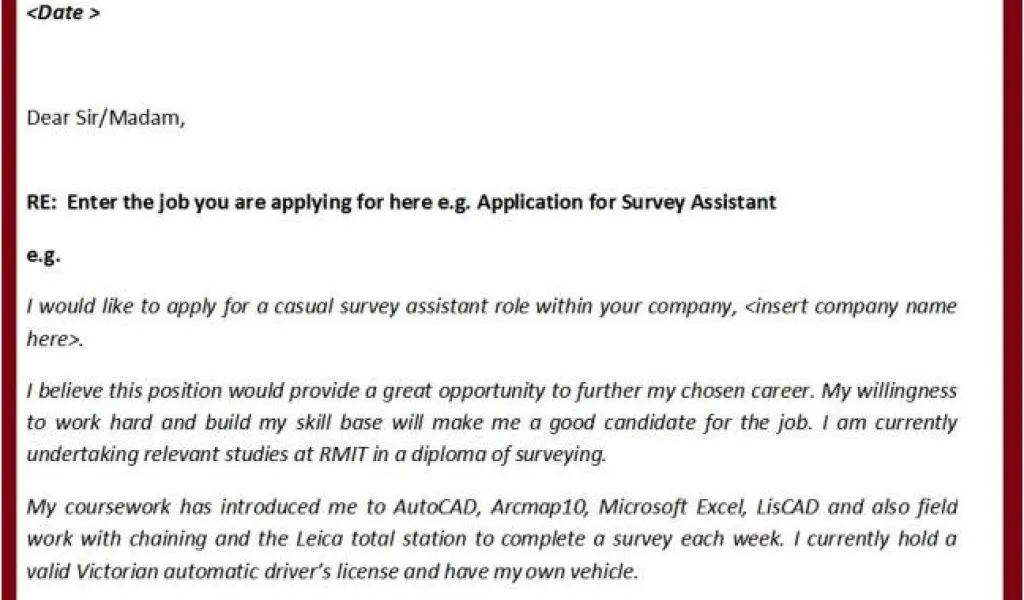
In the closing paragraph, summarize your key qualifications and reiterate your interest in the position. Thank the hiring manager for their time and consideration. Include a call to action, such as expressing your availability for an interview. A strong closing paragraph is just as important as a strong opening. This should be a concise summary of your strongest qualifications and an expression of gratitude for the opportunity. The closing paragraph should leave the reader with a positive impression and a clear understanding of why you are a great fit for the job.
Call to Action
Include a call to action, such as stating your availability for an interview and expressing your eagerness to discuss your qualifications further. Make it easy for the hiring manager to take the next step by clearly indicating your willingness to meet and discuss the opportunity. State that you are available for an interview and provide your contact information, making it easy for the employer to reach you. This shows your initiative and willingness to move forward in the hiring process. Providing a call to action makes it easier for the employer to consider you.
Polite Closing
End your cover letter with a polite and professional closing, such as “Sincerely,” “Best regards,” or “Thank you.” Follow this with your typed name. A professional closing reinforces the positive tone of your letter and leaves a good impression. Ensure that the closing is appropriate for the context of the job. The closing is the last thing the hiring manager will read, and it should reinforce the professional tone of your application. This also makes it easier to conclude, as it signals the end of your cover letter.
Cover Letter Formatting
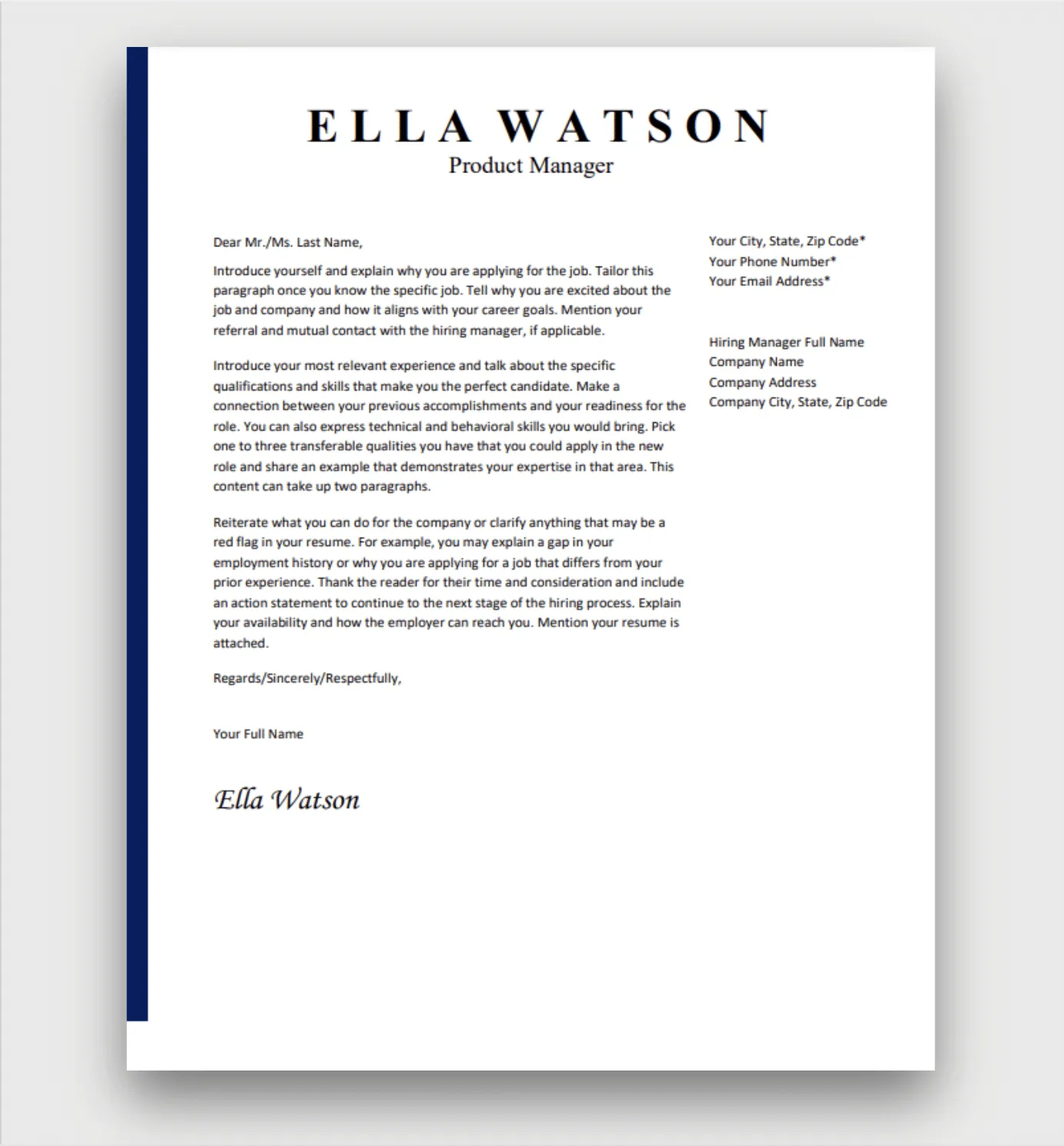
Formatting is critical in creating a professional cover letter. Proper formatting makes your letter easy to read and demonstrates attention to detail. A well-formatted cover letter will make you look professional. The right format makes your cover letter easier to read. Poor formatting can reflect poorly on your application and make you look careless or unprofessional. The right format can make your cover letter shine. Formatting affects readability. The reader will be much more likely to read your application if it is easily accessible.
Font Selection
Choose a professional and easy-to-read font such as Times New Roman, Arial, or Calibri. Keep the font size between 10 and 12 points. Ensure that your font is consistent throughout the entire letter to maintain a polished appearance. Avoid using overly decorative or unusual fonts, which can distract the reader. The best fonts are those that are commonly available and widely readable across different platforms. Select fonts that are clear and easy to read. Stick to fonts that are easy to read, as this helps with readability. This allows for a seamless reading experience.
Margins and Spacing
Use standard one-inch margins on all sides of the document. Double-space between paragraphs to improve readability. Proper spacing makes your cover letter easier to read and navigate. Avoid overcrowding the text, and give the letter a clean and organized look. Use proper margins and spacing. This makes it easier to read the letter. Good spacing and margins make the text easier to read and create a professional appearance. This can help highlight your content.
Proofreading and Editing
Proofread your cover letter meticulously for any grammatical errors, spelling mistakes, and typos. Ask someone else to review your letter as well, as a fresh pair of eyes can often catch errors you might miss. A polished and error-free cover letter demonstrates professionalism and attention to detail. Ensure your cover letter is free from errors. Proofreading is essential to making sure there are no issues. Proofreading is the final step in assuring your letter is perfect and makes the strongest first impression.
Common Cover Letter Mistakes to Avoid
Avoiding common cover letter mistakes is crucial to making a positive impression on hiring managers. By sidestepping these pitfalls, you can significantly increase your chances of getting an interview. Make sure to be professional and use the correct formatting for each cover letter. Being aware of these mistakes can help improve your cover letter. Avoiding these mistakes will ensure your cover letter makes a great first impression. Avoiding these mistakes will improve your chances of getting an interview.
Grammatical Errors
Carefully proofread your cover letter for grammatical errors and spelling mistakes. Errors can damage your credibility and make you appear unprofessional. Correct grammar and spelling errors are key to demonstrating professionalism and attention to detail. Using tools like Grammarly or asking someone else to review your letter can help catch mistakes you might miss. Ensure your cover letter has correct grammar and spelling. Ensure your cover letter is error-free.
Generic Content
Avoid using generic, one-size-fits-all cover letters. Tailor each cover letter to the specific job and company. Show the hiring manager that you have researched the company and understand its needs. Generic cover letters indicate a lack of interest and can give the impression that you are not serious about the position. Tailor your cover letter to each application. Always tailor your cover letters for each application to stand out and show that you are engaged and interested in the specific role.
Ignoring Job Requirements
Carefully review the job description and address all the required skills and qualifications in your cover letter. Ignoring job requirements shows a lack of attention to detail and can lead to your application being rejected. Make sure your cover letter directly addresses the job description. Always address the requirements for the job on the cover letter. Make sure your cover letter is tailored to the requirements.
Length of Cover Letter
Keep your cover letter concise and focused. Aim for one page in length, and avoid rambling or including irrelevant information. A lengthy cover letter can overwhelm the hiring manager, while a concise letter highlights your key qualifications and demonstrates your respect for their time. Keep your cover letter to one page. Being concise shows respect for their time. Always try to make the cover letter as concise as possible.
Cover Letter Examples and Templates
Using cover letter examples and templates can be very helpful in drafting your own cover letter. They provide a framework and demonstrate how to structure and format your letter effectively. These templates offer a starting point and guidance on what to include. Always customize the templates to fit your specific qualifications and the job requirements. Use cover letter examples to help draft your own cover letter. These examples are very important for creating your own cover letter.
Where to Find Cover Letter Templates
Many websites and resources offer free cover letter templates that you can download and customize. Some popular sources include online resume builders, job search websites, and professional career advice websites. Look for templates that are tailored to different industries and job types. Ensure that the template is professional and well-formatted. Find good cover letter templates. Find templates to help you draft your cover letter. Using templates can make it easier to get started.
Modifying Templates for Personal Use
When using a template, customize it to reflect your personal brand, skills, and experiences. Replace the placeholder text with your own information, and tailor the content to match the job description. Make sure to change your template to fit your needs. Always personalize templates. Make sure to edit the template to fit your own needs.
Cover Letter Best Practices
Following best practices will ensure your cover letter stands out and effectively highlights your qualifications. By implementing these best practices, you can significantly increase your chances of making a strong impression on the hiring manager and securing an interview. These practices increase your chances of getting the job. Use these best practices to impress the hiring manager.
Tailoring the Letter
Tailor each cover letter to the specific job and company. Demonstrate that you have researched the company and understand the role’s requirements. Highlight the skills and experiences that directly match the job description. Personalize each cover letter. Always tailor your cover letters for each job.
Using Keywords
Incorporate relevant keywords from the job description into your cover letter. This helps your application get noticed by applicant tracking systems (ATS) and shows the hiring manager that you understand the role. Use keywords to help your cover letter stand out. Use keywords whenever possible to make your cover letter easier to read.
Professional Tone
Maintain a professional and enthusiastic tone throughout your cover letter. Use clear, concise language and avoid slang or jargon. Always be professional in your cover letter. Use professional language when drafting your cover letter. Always make sure your cover letter remains professional.
How to Follow Up
Following up on your cover letter demonstrates your continued interest in the position. It’s a great way to show your enthusiasm. Following up shows that you are serious about the opportunity. The follow-up can be the difference in whether you get the job. Following up is the best way to show the hiring manager your serious intentions for the role.
Submitting Your Cover Letter
When submitting your cover letter, follow the instructions provided in the job posting. Attach your cover letter as a separate document, usually in PDF format, to maintain the formatting. Make sure your cover letter is formatted in the format the employer requires. Make sure that the cover letter is included with your application. Be sure to follow the instructions for submitting your application.
